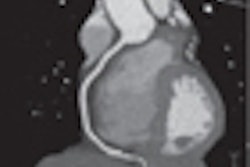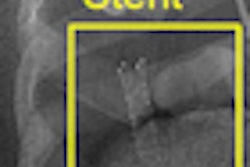Using ultrasound and a minimally invasive procedure, radiologists can identify and treat patients who engage in a self-injury behavior known as self-embedding, according to a study published online September 7 in Radiology.
Self-embedding is defined as cutting the skin to embed objects into soft tissues such as the neck, arm, hand, ankle, or foot to do bodily harm. Types of embedded objects include glass, metal, plastic, graphite, crayon, wood, and stone. Objects have ranged in size from 2.5 to 160 mm, with a thickness of 0.25 to 3.0 mm.
William Shiels, DO, chief of radiology at Nationwide Children's Hospital in Columbus, OH, and senior author of the study, first reported on this disorder at the 2008 RSNA meeting. The article published this month in Radiology updates the findings and reports on a database analysis of 600 patients who underwent foreign body removal with sonography and/or fluoroscopy.
Shiels and colleagues identified 11 teenagers (14 to 18 years of age), nine girls and two boys, who had self-embedded 76 objects a total of 21 times. The objects had been embedded for at least two days, with a known average of 16 days.
Seven of the patients had up to seven repetitive incidents. All but one patient had previously attempted suicide or reported having suicidal ideations.
X-rays identified metal, graphite, glass, and dense plastic foreign bodies, but ultrasound was required to diagnose embedded nonradiopaque objects, such as plastic, wood, and crayon. Ultrasound was used to evaluate areas of inflammation, define possible abscesses, and direct treatment.
A total of 68 of the 76 objects were removed in the interventional radiology section of Nationwide Children's Hospital, with incisions ranging from 4 to 8 mm in length. Hydrodissection enables a more precise definition of the foreign body and facilitates forceps removal, according to the authors.
"This is a new way for radiologists to impact public and mental health," Shiels said. "Radiologists can be in a position to interrupt a cycle of self-harm with effective, early diagnosis and referral for appropriate behavioral health and foreign body removal. Early detection and removal of these foreign bodies are key steps for these teenagers to engage in effective therapy and interrupt their cycle of self-harm, so they can recover and grow as healthy and successful adults with good coping skills."
By Cynthia E. Keen
AuntMinnie.com staff writer
September 9, 2010
Related Reading
Radiologists identify, successfully treat new form of self-injury, December 3, 2008
Copyright © 2010 AuntMinnie.com



















